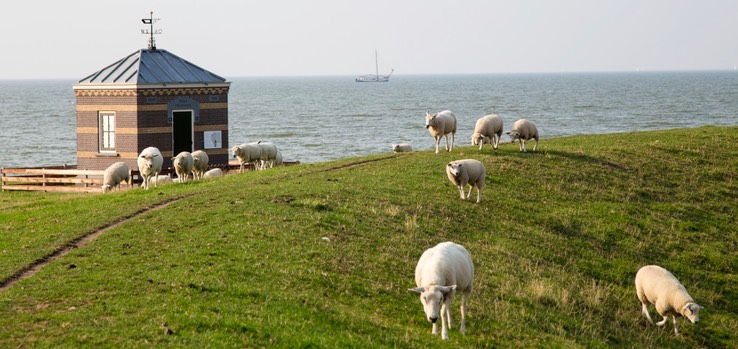
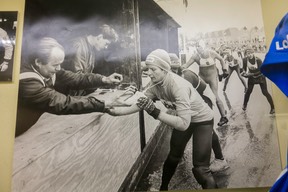
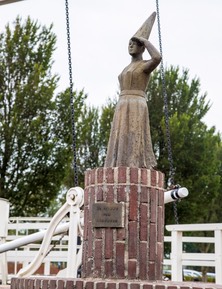
Not to keep you any longer in suspense the eleven towns of the famous Dutch ice skating race are: Leeuwarden, Sneek, IJlst, Sloten, Stavoren, Hindeloopen, Workum, Bolsward, Harlingen, Franeker and Dokkum of which we have now visited four. Unfortunately this race can only take place once in a while when the ice is 15cm thick over the whole stretch. That means that winters have to be extremely cold. Injuries during the race have included broken bones, eye damage and frost bites. But in those years when the race took place national legends were born. The best skaters can skate through all eleven cities a stretch of 200km finishing back in Leeuwarden in 6.5 hours!
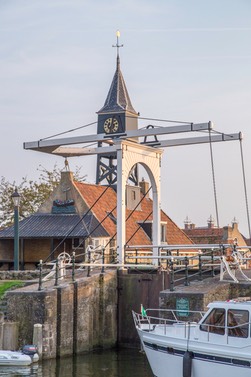
Stavoren has about 950 inhabitants and Hindeloopen around 750. They were once thriving shipping towns, exporting things like sand to north-eastern Europe. The West Frisians were also way ahead of the modern tax cheats! The tax for cargos was calculated from the size of the decks. So they built special ships with small decks but deep, round holds. 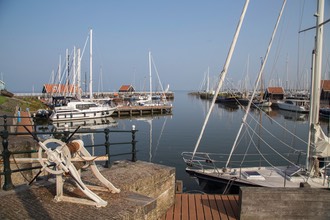 Shipping died down drastically at Napoleonic times when all the trading was done from Amsterdam. Eventually fishing for herring, anchovies and eel became a major source of income which stopped abruptly in 1932 with the building of the big dyke closing off the IJsselmeer. Now the towns live mostly from tourism.
Shipping died down drastically at Napoleonic times when all the trading was done from Amsterdam. Eventually fishing for herring, anchovies and eel became a major source of income which stopped abruptly in 1932 with the building of the big dyke closing off the IJsselmeer. Now the towns live mostly from tourism.
The rollercoaster from wealth to poverty is told in the legend of “The Lady of Stavoren” whose statue overlooks the old harbour. It is told that the lady was a very rich widow. One day she asked a captain to bring her the most precious cargo he could find. When he returned with a ship full of wheat, saying that it was most precious as it could feed all the people, she got mad and ordered him to empty the ships content into the harbour. This, locals believed, caused the silting up of the harbour and the decline of the towns riches. The lady herself is said to have ended up as a pauper begging for food.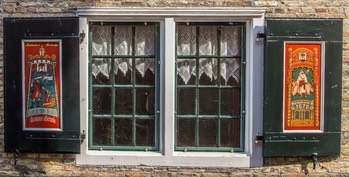
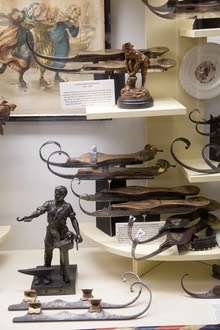
Hindeloopen is the quaintest of the three towns. Even though it only takes 30 minutes to walk once through all the small streets, one discovers new things with every walk. If you don’t mind the company of sheep, it’s also nice to walk along the dam which protects the town from the IJsselmeer. Throughout town one can find Frisian folk art painted on furniture, window shutters and all kind of wooden articles.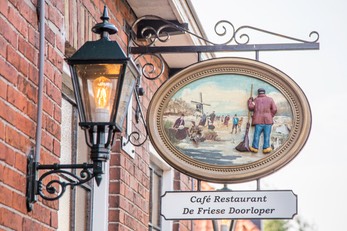
My favourite place in Hindeloopen was the Ice Skating Museum. Husband and wife Gauke and Pieter Bootsma have lovingly collected hundreds of ice skates and ice skating memorabilia including films and pictures from the famous 11 town skating race.
I have to say that some of the ice skates from the 1920s look a bit like scrap metal, and probably were collected by rag and bone men! There was one famous former rag and bone man who became a renown artist, called Jopie Huisman. He was born and worked in the town Workum.
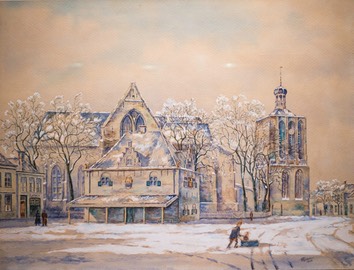
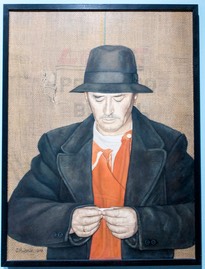 A modern museum has been built to honour his work. He started to paint discarded objects he collected and which in his words’touched him deeply’. He also sketched scenes from the area, places he called ‘his heaven’. The audio guide puts Jopie's words taken from radio and television interviews to his paintings.
A modern museum has been built to honour his work. He started to paint discarded objects he collected and which in his words’touched him deeply’. He also sketched scenes from the area, places he called ‘his heaven’. The audio guide puts Jopie's words taken from radio and television interviews to his paintings.
A Dutch Gentleman living in a house next to our mooring gave us a guided tour through Workum's St. Gertrudis Church. 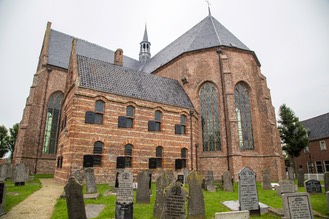 The outside of the basilica shows a mixture of styles and brickwork. Due to lack of money the tower has never been connected to the church. Inside are stored wooden biers belonging to the diverse guilds.
The outside of the basilica shows a mixture of styles and brickwork. Due to lack of money the tower has never been connected to the church. Inside are stored wooden biers belonging to the diverse guilds.
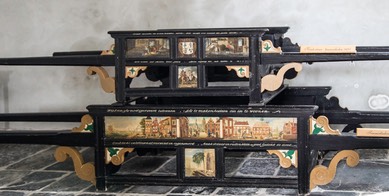
There is one for the bakers, the goldsmith and the clockmakers guild, even one for surgeons and for children as the paintings on them show. They are made of solid wood and are rarely in use anymore as it would take 12 people to carry a coffin on them.
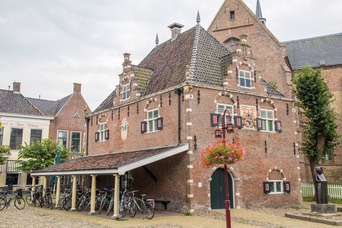
Just as we were admiring Workum's old weigh house situated at the main road and contemplated that here used to be a canal where barges laden with butter pulled up to be weighed, we bumped into a Sydney-sider. 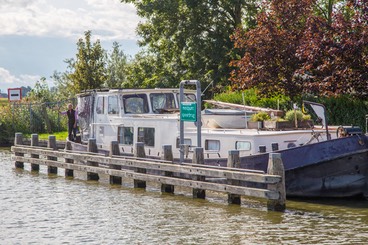
Dutch Barge Sydney group organiser extraordinaire, Charles, was taking the name “Work'um” seriously as his bicycle was loaded with timber slats for work on his barge. In the afternoon we were invited by Charles and Judy- who live such an amazing busy life- on board of their barge “De Vrouwe Anna Maria” for a chat and a home brewed beer.